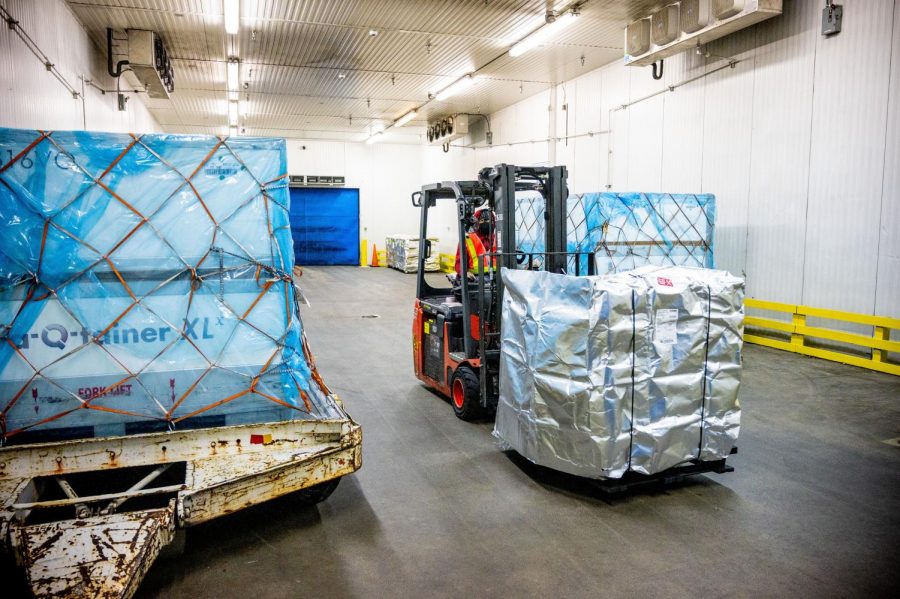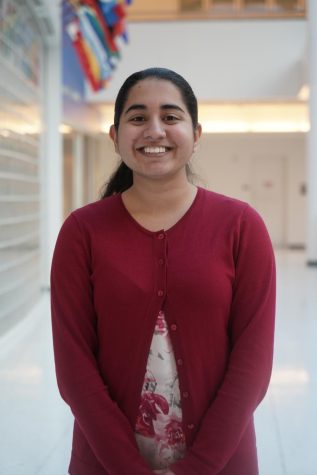COVID-19 vaccine rollout favors wealthy nations
April 10, 2021
COVID-19 Vaccines Global Access is a global initiative to bring 1 billion vaccines to 92 countries that can’t afford them. Even with COVAX in place, many countries have yet to receive their first batch of vaccines, while others have half of their populations vaccinated. It begs the question as to what is causing the unequal distribution of vaccines in the first place.
As of now, at least “90% of people in 67 low-income countries” are unlikely to get the COVID-19 vaccine in 2021, according to the People’s Vaccine Alliance, which includes organizations like Amnesty International, Frontline AIDS and Global Justice Now.
This vaccine disparity is due to wealthy nations, such as the United States, the U.K. and Canada buying most of the world’s vaccine supply. Many of these countries have enough doses to vaccinate their population several times over, as is the case with the United States.
In fact, data from The New York Times reveals that North America leads the world in vaccination rates, followed by Europe, South America, Asia, Oceania and then Africa.
Wealthier countries were first in line to buy vaccines, while low-income countries only secured a vaccine shipment deal in January 2021, according to UNICEF.
Middle-income countries were unable to get vaccines not because of financial problems, but because they jumped into the vaccine fray too late and couldn’t secure a spot.
Ultimately, getting a country’s population vaccinated boils down to how much a country is willing to pay.
For instance, Mexico, which is considered a middle-income country, was only able to join the vaccine line after billionaire Carlos Slim funded the purchase of 150 million doses of AstraZeneca doses for Latin America.
Though it is beneficial for high–income countries like Japan, Spain, Norway, Saudi Arabia and Poland and upper middle–income countries like Iran, Thailand, Peru and Argentina to be vaccinated, it is dangerous to not account for the lower middle-income and low-income countries.
These lower middle–income countries include Zimbabwe, Pakistan, Kenya and Vietnam, while low–income countries are ones like Malawi, Rwanda, Afghanistan and Yemen.
One concern, however, is the South African COVID-19 variant and whether those vaccinated will be immune to it. The parts of the world left unvaccinated could have COVID-19 outbreaks that lead to new variants.
It is not possible to prepare for every variant in advance, so all it takes is just one strand of COVID-19 to render a vaccine useless. A fully inoculated person may not have immunity to a new variant, once again making them vulnerable to the virus.
“If the rich world continues to hoard vaccines, the pandemic will drag on for perhaps as long as seven more years,” Dr. Gavin Yamey, the director of the Center for Policy Impact in Global Health at Duke University, said.
Hence, according to Yamey, the way to end the pandemic is to evenly distribute vaccines. Wealthy countries, however, have also made it clear that their priority is to vaccinate their own people, not to help the poorer countries. This phenomenon is called vaccine nationalism.
Though the Biden administration donated vaccines to Canada and Mexico, the rest of the vaccines will go toward United States residents. Instead, the nation will donate money to COVAX.
Adar Poonawalla, CEO of the Serum Institute of India, which produces the Novax and AstraZeneca vaccines, announced that its vaccine production would solely be for India.
This decision hurts COVAX, since it was supplying AstraZeneca COVID-19 vaccines to low-income countries. Additionally, Asian countries relying on India for vaccines are now scrambling to either pick up the vaccine mantle themselves, like Russia, or trying to find a vaccine provider without a long consumer line, which is now nearly impossible.
Another key issue is that developers refuse to share their intellectual property.
The World Health Organization tried to fix this issue and encourage companies developing vaccines to share their processes with lower-income nations, but no company agreed to it.
“The problem is that the companies don’t want to do it. And the government is just not very tough with the companies,” James Love, who leads the nonprofit Knowledge Ecology International, said.
If vaccination companies shared how they make COVID-19 vaccines, prioritizing lives over profits, then more people could be vaccinated.
Take South Africa for instance. Though the country was able to develop its own vaccine, it could not “reach a fair pricing agreement.” Hence, the nation will have to wait for an indefinite amount of time for shipments while the death toll continues to rise.
Not only are many countries being kept out of vaccine production and not given vaccines, but they also continue to deal with increasing cases.
In the United States, frontline workers and the elderly are being vaccinated. In New York, among other states, the eligibility even expanded with anyone over 16 able to get a vaccine as of April 6.
The essential workers, the elderly and the immunocompromised of other countries, however, still remain unvaccinated.
“The worst possible outcome is you’re offering vaccines to a whole country’s population before we’re able to offer it to the highest-risk ones in other countries,” Dr. Bruce Aylward, a senior adviser to the WHO’s director-general, said.
Aylward’s hypothetical fears, however, have become a reality.
Until the COVID-19 vaccination rollout is spread equally across the globe, the pandemic could continue for years, taking millions of lives. At this intersection of capitalism and science, scientists hope that wealthy nations are able to put their bids aside and instead help struggling nations.








